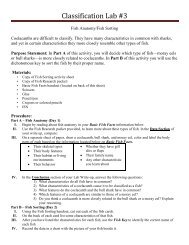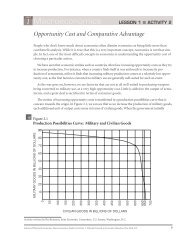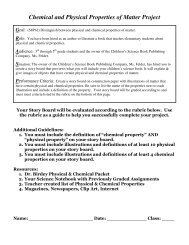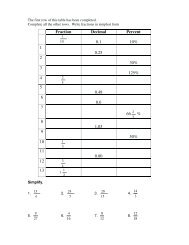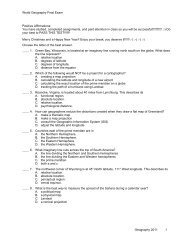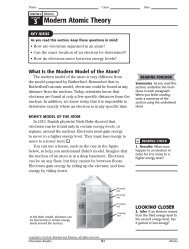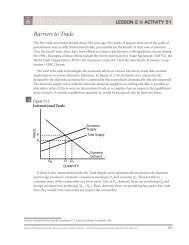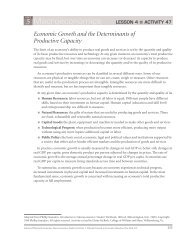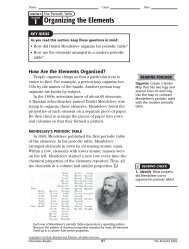Notes on Biogeochemical Cycles and Ecology.pdf
Notes on Biogeochemical Cycles and Ecology.pdf
Notes on Biogeochemical Cycles and Ecology.pdf
You also want an ePaper? Increase the reach of your titles
YUMPU automatically turns print PDFs into web optimized ePapers that Google loves.
(autotrophs). In the animal, the carb<strong>on</strong> also has the same 3 possible fates. Carb<strong>on</strong> fromplants or animals that is released to the atmosphere through respirati<strong>on</strong> will either betaken up by a plant in photosynthesis or dissolved in the oceans. When an animal or aplant dies, 2 things can happen to the carb<strong>on</strong> in it. It can either be respired bydecomposers (<strong>and</strong> released to the atmosphere), or it can be buried intact <strong>and</strong>ultimately form coal, oil, or natural gas (fossil fuels). The fossil fuels can be mined<strong>and</strong> burned in the future; releasing carb<strong>on</strong> dioxide to the atmosphere. Otherwise, thecarb<strong>on</strong> in limest<strong>on</strong>e or other sediments can <strong>on</strong>ly be released to the atmosphere whenthey are subducted <strong>and</strong> brought to volcanoes, or when they are pushed to the surface<strong>and</strong> slowly weathered away. Humans have a great impact <strong>on</strong> the carb<strong>on</strong> cycle becausewhen we burn fossil fuels we release excess carb<strong>on</strong> dioxide into the atmosphere. Thismeans that more carb<strong>on</strong> dioxide goes into the oceans, <strong>and</strong> more is present in theatmosphere. The latter c<strong>on</strong>diti<strong>on</strong> causes global warming, because the carb<strong>on</strong> dioxidein the atmosphere allows more energy to reach the Earth from the sun than it allows toescape from the Earth into space.The Oxygen Cycle:If you look back at the carb<strong>on</strong> cycle, you will see that we have also described theoxygen cycle, since these atoms often are combined. Oxygen is present in the carb<strong>on</strong>dioxide, in the carbohydrates, in water, <strong>and</strong> as a molecule of two oxygen atoms.Oxygen is released to the atmosphere by autotrophs during photosynthesis <strong>and</strong> takenup by both autotrophs <strong>and</strong> heterotrophs during respirati<strong>on</strong>. In fact, all of the oxygen inthe atmosphere is biogenic; that is, it was released from water through photosynthesisby autotrophs. It took about 2 billi<strong>on</strong> years for autotrophs (mostly cyanobacteria) toraise the oxygen c<strong>on</strong>tent of the atmosphere to the 21% that it is today; this opened thedoor for complex organisms such as multicellular animals, which need a lot ofoxygen.The Nitrogen Cycle:




